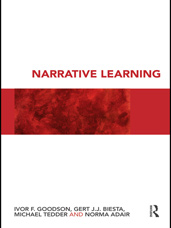Narrative Learning
Towards a Theory of Narrative Learning
In the foregoing chapters we have presented and reflected upon the stories from eight individuals who took part in the Learning Lives project. Our reason for selecting these eight was not that the other participants in the project had nothing interesting to say, and also not that only these eight provided evidence of narrative learning. The main reason for our selection is that the stories of these eight individuals allow us to explore those differences in narrative quality and in learning potential and action potential that we identified as important on the basis of our analysis of a much larger number of cases. The stories of John Peel, Marie Tuck, Maggie Holman, Diogenes, Christopher, Paul Larsen, Eva and Russell Jackson are, in this sense, exemplary for the variety of aspects and dimensions that we see as crucial for understanding and theorising narrative learning.
As we begin to theorize the different aspects and dimensions of narrative learning, we wish to warn against any assumption of a hierarchy of esteem or well-being related to the distinctions we introduce. The examples of John Peel and Paul Larsen show elegantly that, just as low narrative intensity and an absence of any explicit narrative learning can be a clear route to well-being and fulfilment, so high narrative intensity and elaborate analysis can be a ‘narrative maze’ imprisoning the individual in learning without empowerment. So whilst the distinctions we have made and will reiterate in this chapter allow us to characterize important elements and dimensions of narrative and narration, this does not in any sense define a capacity for fulfilment or well-being. At root our understanding of different aspects and dimensions of narrative learning warns against any absolutist notions of social or psychological determinism. This is not – it should be noted – to argue that future work on narrative learning will not elucidate patterns related to, for example, class, gender, and ethnicity, to regional, cultural and historical variation, or to personal aspects, factors and dimensions. Our focus on narrative and narration does, however, offer an insight into the complex variations which underpin, and indeed sometimes override, such categories and stereotypes.
